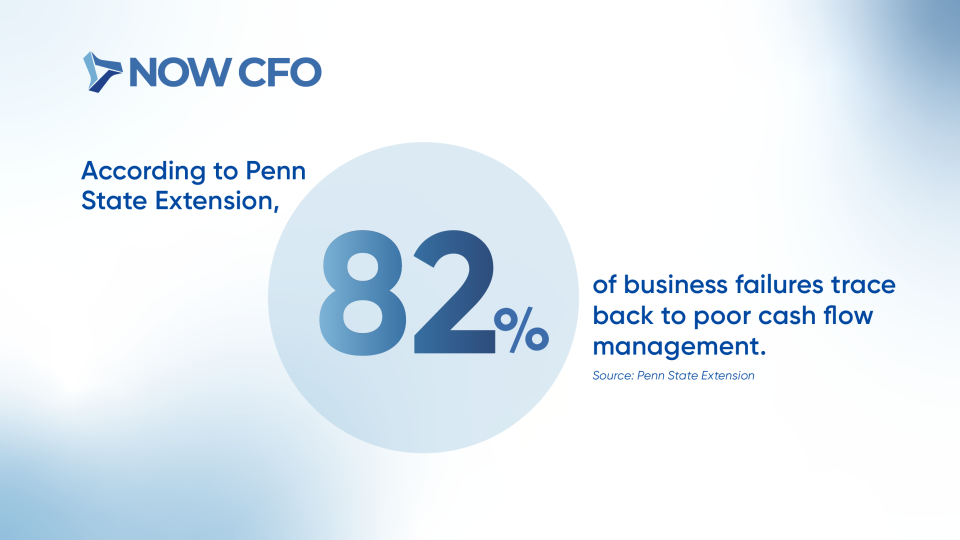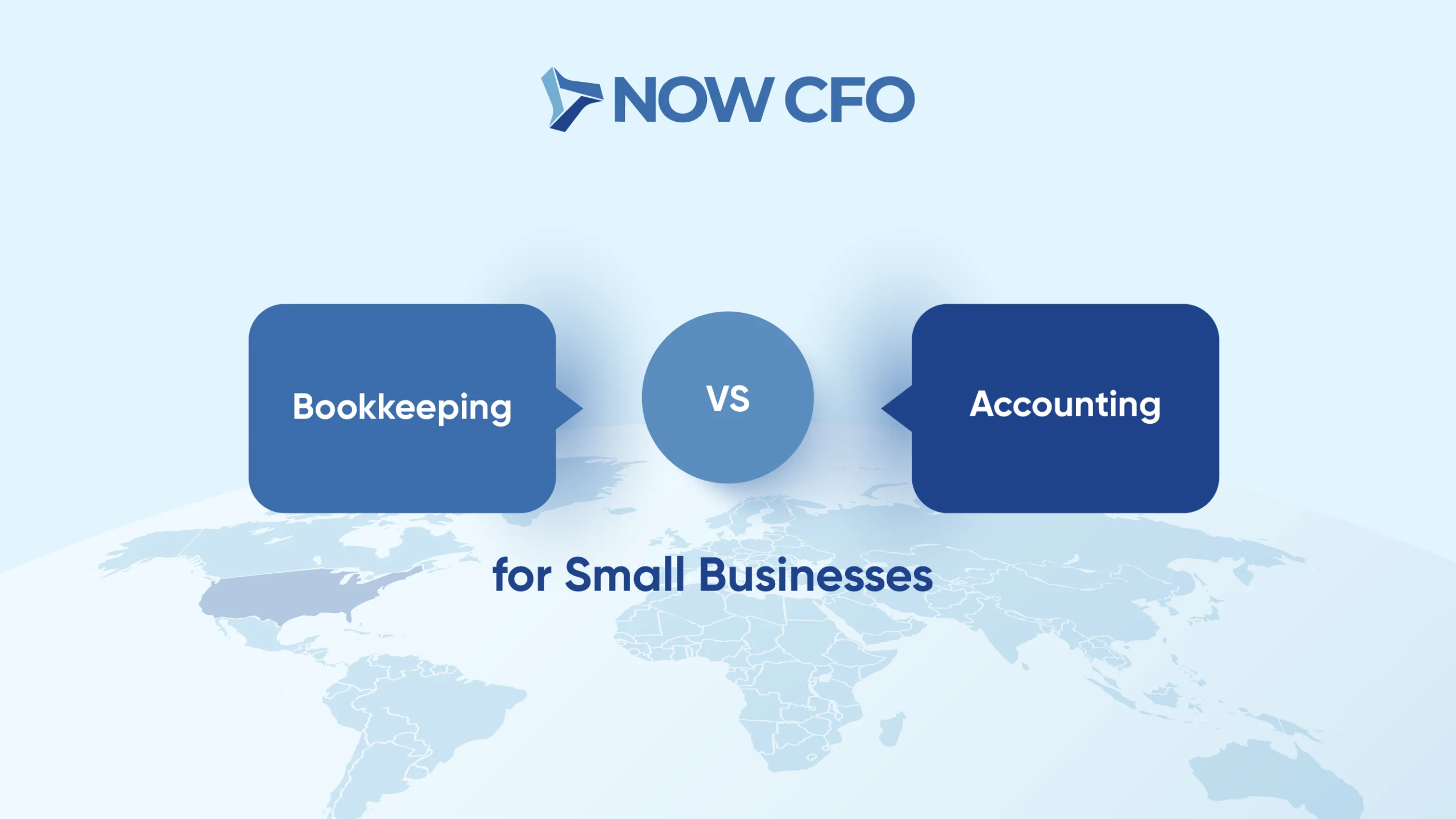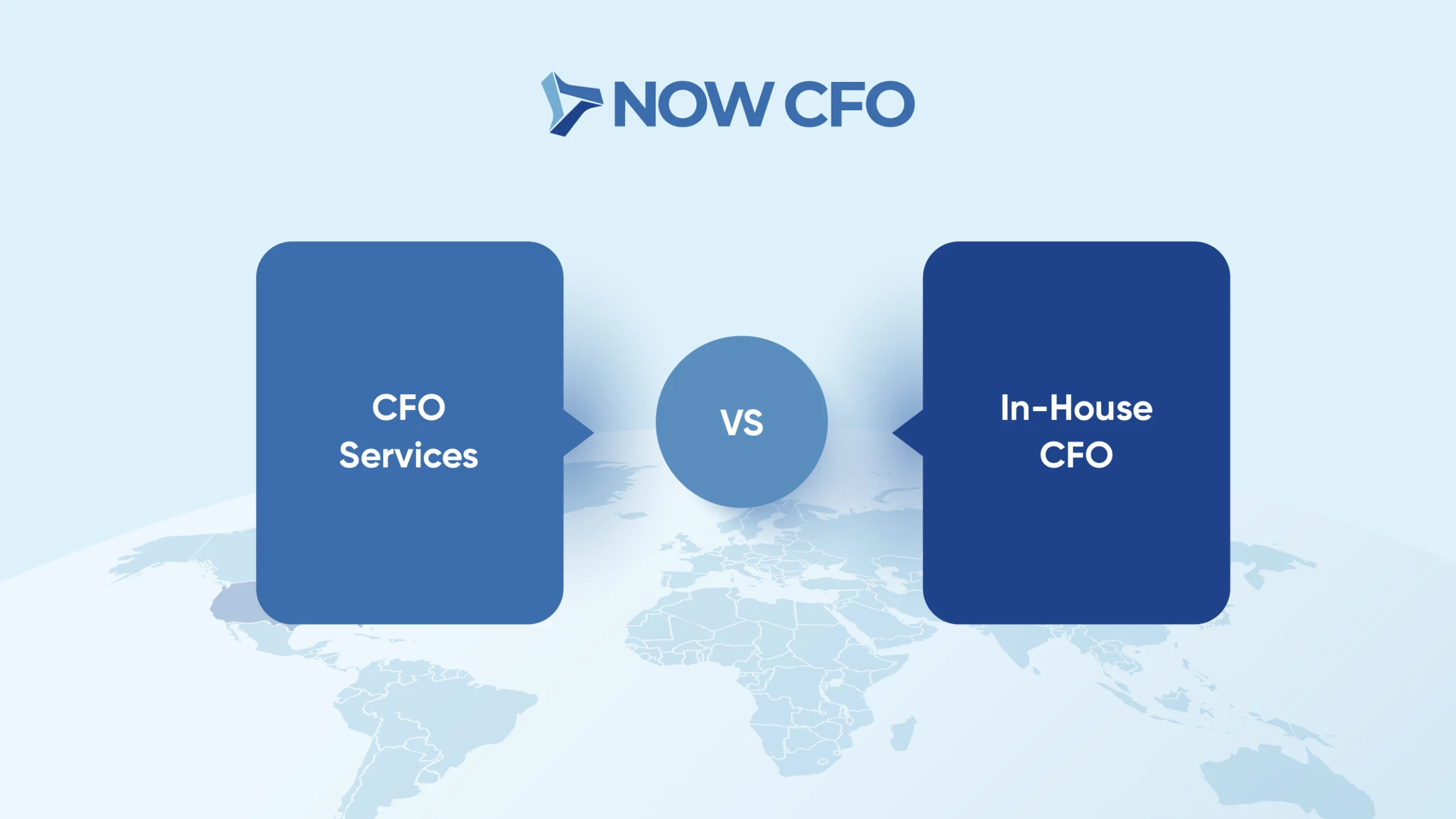
Growth rarely happens by accident; companies that scale predictably start with a clear financial playbook. A robust financial strategy in business growth pulls every lever into one cohesive roadmap that converts raw ambition into workable numbers.
The U.S. Census Bureau reports that the share of firms qualifying as high growth fell from nearly 20 percent in 1978 to under 13 percent in 2020. Against this backdrop, finance leaders must proactively identify where profit is generated, determine how aggressively to reinvest, and safeguard liquidity.
What is Financial Strategy and Why is it Important for Business Growth?
Building on the introduction, we explore financial strategy in business growth by clarifying its meaning and why it is indispensable to scale any enterprise.
Defining Financial Strategy
A financial strategy is the deliberately crafted roadmap that aligns a company’s capital structure, revenue targets, and risk profile with its long-term objectives. It dictates how leaders deploy equity, debt, and retained earnings, and how they adapt to market shifts through proactive cash flow optimization and cost management.
Critically, the strategy is not a static document; it evolves through periodic forecasting, variance analysis, and scenario planning to keep the company’s trajectory on course.
Only 34.7 % of businesses started in 2013 are still operating a decade later. Meanwhile, a Liberty University study found firms with post-formation business plans were 20 % more likely to survive than peers.
The Relationship Between Financial Planning and Business Expansion
Precise planning converts vision into executable steps, creating the bridge between strategy and day-to-day growth initiatives. Robust financial planning for business growth structures capital needs, timelines, and performance milestones.
| Financial Planning Activity | Expansion Outcome |
|---|---|
| Detailed revenue forecasting | Identifies funding gaps early, allowing timely capital raises |
| Scenario analysis & stress testing | Shields growth plans from market shocks by quantifying downside risks |
| Rolling budgets updated quarterly | Keeps resource allocation synced with evolving sales pipelines |
| KPI dashboards tied to strategic goals | Enables faster pivots when metrics drift from targets |
Key Components of a Financial Growth Strategy
To translate vision into execution, leaders break financial strategy in business growth into actionable building blocks that guide every dollar, forecast, and decision.
Financial Planning and Budgeting for Growth
A disciplined plan turns ambition into numbers that the team can hit.
- Build rolling 12-to-18-month budgets that flex with market shifts.
- Align revenue targets with cost baselines and long-term financial planning models.
- Use zero-based reviews each quarter to re-justify spend.
- Tie department budgets to enterprise KPIs so variances surface fast.
If done well, this planning frame will keep the broader financial strategy in business growth on course while freeing capital for innovation.
Cash Flow Management and Optimization
Growth stalls when liquidity dries up. Strong working-capital controls; dynamic cash forecasting, inventory turns benchmarking, and tight receivables follow-up—sustain momentum.
According to Penn State Extension, 82 % of business failures trace back to poor cash flow management

Source: Penn State Extension
Proactive monitoring, coupled with a CFO financial strategy that balances credit terms with supplier discounts, guards against those shocks and supports expansion funding.
Risk Management and Contingency Planning
Risk discipline converts surprises into solvable equations.
- Map strategic, operational, and financial risks against probability-impact grids.
- Pre-approve credit lines for downturn scenarios.
- Draft decision trees that trigger cost freezes or capital redeployments when metrics flash red.
Investment and Capital Allocation for Business Expansion
Smart capital deployment fuels scale. Allocate funds using hurdle-rate screening, NPV ranking, and portfolio balance across core, adjacent, and transformational bets.
Blend retained earnings with selective debt to optimize WACC, and revisit capital projects quarterly to re-route underperforming funds; an agile stance is central to a forward-looking financial strategy in business growth.
Performance Metrics and Financial Tracking
Finally, real-time dashboards, cash conversion cycle, ROIC, forecast accuracy, and customer acquisition cost close the loop between strategy and outcomes. Weekly variance reviews let leaders pivot before small drifts become margin bleeds, ensuring every decision reinforces the company’s overarching financial plan in business growth.
Learn More: Benefits of Hiring an Outsourced CFO
How Financial Strategy Drives Business Growth
Leaders turn vision into velocity when they make financial strategy in business growth the lens for every spending, investment, and hiring decision. Companies ensure that expansion strengthens the balance sheet by hard-wiring finance into operations.
Optimizing Resource Allocation to Support Growth
Strategic allocation moves capital from low-return tasks to high-return initiatives. Start by mapping each cost line to revenue potential, then rank projects against hurdle-rate thresholds to be sure funds flow to the best financial strategies for growing businesses rather than legacy habits.
A disciplined loop of forecast, spend, and review keeps the broader financial strategy for business growth tuned to market shifts and frees cash for innovation.
Managing Cash Flow to Ensure Stability During Expansion
A robust liquidity playbook keeps growth from outrunning cash.
- Build 13-week rolling forecasts that update daily sales and payables data.
- Shorten receivables cycles with early-payment incentives.
- Layer in a revolving credit facility sized at two months’ operating expenses.
- Automate AP scheduling to smooth weekly outflows.
Creating Scalable Business Models with Financial Projections
Before adding headcount or sites, management should test scalability assumptions.
- Use driver-based models that link revenue to customer-acquisition cost and churn.
- Stress-test margins under 10 %, 25 %, and 40 % growth scenarios.
- Model variable vs. fixed-cost breakpoints to time capacity investments.
- Feed results into funding schedules so capital raises happen before runway compresses.
Enhancing Decision-Making with Data-Driven Financial Insights
Dashboards that marry operational and financial KPIs accelerate action. When finance teams pipe real-time gross margin, cohort retention, and cash conversion cycle data to the C-suite, leaders pivot faster than rivals.
Small businesses generated 71% of net private-sector job gains in the current expansion. An outsourced CFO can institutionalize this rigor without adding full-time overhead.
Identifying Growth Opportunities Through Financial Analysis
Capital-efficient expansion starts with forensic finance reviews.
- Compare product-line gross margins to pinpoint categories ripe for upsell.
- Run market-sizing models to reveal underserved geographies.
- Use variance analysis to surface cost redundancies that can fund R&D.
- Track competitor benchmarking to expose pricing gaps.
The Role of a CFO in Developing a Financial Growth Strategy
A best-in-class CFO turns financial strategy in business growth from a spreadsheet into a living system, ensuring every operational choice accelerates revenue without compromising resilience.
Aligning Financial Strategy with Business Objectives
A proactive CFO starts by translating the board’s vision into quantifiable targets. In practice, she maps margin goals, market-share ambitions, and ESG commitments onto integrated forecasts, ensuring capital outlays, hiring plans, and pricing moves reinforce each objective.
Managing Financial Risks to Support Sustainable Growth
Risk oversight is not a compliance afterthought; it is the shock absorber that lets companies speed up safely. Modern CFOs institute enterprise-wide risk registers, quantify exposures in economic-value-at-risk terms, and build safeguard buffers into long-term financial planning models.
Yet the 2023 NC State ERM report shows only 28 % of firms deem their key risk indicators robust enough for strategic choices. By elevating risk dashboards to board level, finance chiefs close that gap and protect the role of financial management in business expansion.
Implementing Investment and Financing Strategies
A CFO’s capital playbook supplies fuel just when growth initiatives need it most.
- Prioritize projects with IRRs above the weighted-average cost of capital.
- Mix equity, term debt, and mezzanine tranches to keep leverage within covenant headroom.
- Sequence fundraising around milestone-based valuations to minimize dilution.
- Channel proceeds into investment strategies for business growth such as automation or go-to-market acceleration.
Analyzing Financial Data to Forecast Growth Potential
CFOs convert raw numbers into foresight by embedding analytics in everyday workflows:
- Real-time gross-margin tracking spots emerging profit pools.
- Cohort-based lifetime-value models size upsell potential.
- Monte-Carlo simulations test how to create a financial growth plan under volatile rate environments.
- Competitive-benchmark dashboards reveal pricing headroom before market share slips.
Monitoring and Adjusting Financial Plans as the Business Scales
Growth rarely follows a straight line, so CFOs institute rolling forecasts and monthly variance reviews to recalibrate quickly. When sales outpace production, they unlock emergency capex; when costs creep, they trigger zero-based scrub-downs.
By funneling insights from the field back into budgets, an outsourced CFO or in-house chief ensures capital stays aligned with opportunity and that contingency reserves remain intact, all while preserving stakeholder confidence in the overarching financial strategy for business growth.
Best Financial Practices to Support Business Growth
Sustaining momentum requires converting high-level financial strategy principles into daily habits that protect liquidity, fund innovation, and manage risk.
Prioritizing Cash Flow and Liquidity Management
Healthy cash is the oxygen of any expansion. Finance teams forecast weekly inflows and outflows, tighten collection terms, and stagger payables so working capital never dips below a two-month threshold.

Alarmingly, 50 % of SMEs hold fewer than 15 cash-buffer days; proof that vigilance matters. Anchoring policies to rigorous financial planning for business growth ensures short-term shocks do not derail scale-up plans.
Reinvesting Profits Into Growth-Oriented Projects
Profits should not idle in low-yield accounts; they must power financial growth strategies.
- Allocate a fixed share of after-tax earnings to product R&D and new-market pilots.
- Use hurdle-rate screens so only initiatives above the firm’s WACC receive funding.
- Establish “innovation tranches” that release capital once milestones are met, preserving flexibility.
Leveraging Debt and Equity for Expansion
External capital magnifies returns when balanced wisely.
- Tap term debt for asset purchases that throw off steady cash.
- Issue equity for long-cycle bets where early cash flow is limited.
- Maintain leverage below covenant cushions and stress-test coverage ratios quarterly.
Building Reserves for Growth and Risk Mitigation
Robust reserves turn shocks into speed bumps. Expansion initiatives should be backed by a liquidity cushion covering three months of fixed operating costs plus any committed capex. Reserves work best when segregated from daily cash and parked in laddered Treasury bills or high yield sweep accounts that can be liquidated within 72 hours.
Finance leaders should revisit target balances for each quarter, aligning them with evolving risk scenarios and broader long-term financial planning models. Automating weekly transfers from operating cash to the reserve fund keeps discipline high, while board-approved drawdown protocols prevent ad-hoc raids.
Continuously Reviewing and Refining Financial Strategies
Markets shift; so must your tactics.
- Run rolling forecasts and variance dashboards every 30 days.
- Hold quarterly war-room sessions to recalibrate pricing, cost curves, and capital priorities.
- Benchmark KPIs against top-quartile peers to trigger corrective action early.
Learn More: How to build a finance team with an outsourced cfo
Benefits of Implementing a Strong Financial Strategy for Growth
When companies embed a disciplined financial strategy, they harvest tangible, bottom-line advantages that compound year after year. The following benefits illustrate why a robust framework outperforms ad-hoc decision-making.
Increased Profitability and Business Stability
A data-driven plan boosts margins by steering resources toward the highest-return products and markets while trimming waste. U.S. corporate profits climbed 7.9 % in 2024 as firms tightened capital allocation and expense controls.
Consistent gains strengthen cash reserves, raise creditworthiness, and create a shock-absorbing cushion that keeps operations steady through economic swings.
Improved Financial Decision-Making and Planning
With structured dashboards and rolling forecasts, leaders replace intuition with evidence.
- Scenario modeling quantifies the upside and downside of proposed initiatives.
- Dynamic budgets tie spending to real-time KPIs, elevating the CFO’s financial strategy from gatekeeper to growth architect.
- Cross-functional planning sessions align sales, operations, and finance on shared milestones, driving financial strategies to support sustainable business growth.
Proactive Risk Management for Long-Term Success
A robust strategy embeds early-warning indicators; liquidity ratios, covenant headroom, hedging thresholds. This forward stance reduces earnings volatility, safeguards investor confidence, and preserves enterprise value, proving that risk prevention is itself a profit center.
Better Alignment of Financial Goals with Growth Objectives
Clear financial guardrails ensure that expansion targets mesh with liquidity needs and capital-structure limits. When revenue syncs with funding timelines, teams avoid overextension, and strategic bets receive timely support.
Alignment also clarifies accountability; every department knows which metrics define success and how they relate to enterprise-level goals.
Access to Capital for Expansion and Innovation
Funders reward transparency. A polished plan with investment strategies for business growth lowers perceived lender risk, unlocks favorable terms, and accelerates deal cycles, giving innovators the capital runway they need to outpace competitors.
Learn More: Outsourced CFO Improves Financial Planning
How to Develop a Financial Strategy That Drives Growth
Turning ambition into action begins with a structured process that embeds growth into every forecast, budget, and course-correction.
Conducting a Financial Assessment and Setting Growth Goals
A rigorous baseline analysis clarifies where the enterprise stands and how far it must travel. he matrix below delivers that snapshot by pairing each critical KPI with its current performance, an ambitious yet attainable target, a clear deadline, and a single accountable owner.
| Assessment Area | Current Metric | Target Metric | Timeline | Owner |
|---|---|---|---|---|
| Liquidity Ratio | 1.6× current liabilities | ≥ 2.0× | 12 months | Controller |
| Gross Margin | 34 % | 40 % | 18 months | VP Ops |
| Debt-to-Equity | 1.4× | ≤ 1.0× | 24 months | CFO |
| Customer Churn | 8 % monthly | 4 % | 9 months | CRO |
| R&D Spend | 3 % of revenue | 6 % | 12 months | CTO |
Creating a Detailed Financial Plan for Expansion
Next, finance leaders draft multi-scenario projections that link revenue drivers to resource needs. They layer capital-expenditure schedules, hiring ramps, and marketing outlays onto sales pipelines, then sync funding events with cash-flow inflection points.
Implementing Financial Controls to Ensure Accountability
Effective controls deter fraud and surface variances early:
- Segregate duties in receivables, payables, and payroll.
- Automate reconciliations with exception alerts to management.
- Dual authorization is required on payments above preset thresholds.
Using Financial Metrics to Track Growth Progress
Dashboards convert plans into real-time insight. Key metrics: cash-conversion cycle, forecast-to-actual variance, customer-lifetime value, stream directly to decision-makers, enabling mid-course pivots before minor drifts threaten margins.
Adapting the Strategy as the Business Evolves
Markets move; plans must follow.
- Schedule monthly variance reviews to recalibrate budgets.
- Re-rank investment pipelines every quarter against updated hurdle rates.
- Refresh risk scenarios semi-annually to capture new macro headwinds.
Conclusion: Empowering Business Growth with Effective Financial Strategy
Financial mastery is an ongoing discipline that transforms everyday decisions into compounding value. By embedding a rigorously monitored financial strategy in business growth, you convert uncertainty into opportunity, ensure cash is always on call, and maintain the credibility that lenders, investors, and employees rely on.
The frameworks outlined above equip you to avoid costly detours and accelerate toward bold revenue targets. Now it’s your move. Choose the next step that matches your urgency: schedule a complimentary consultation with a NOW CFO expert.














